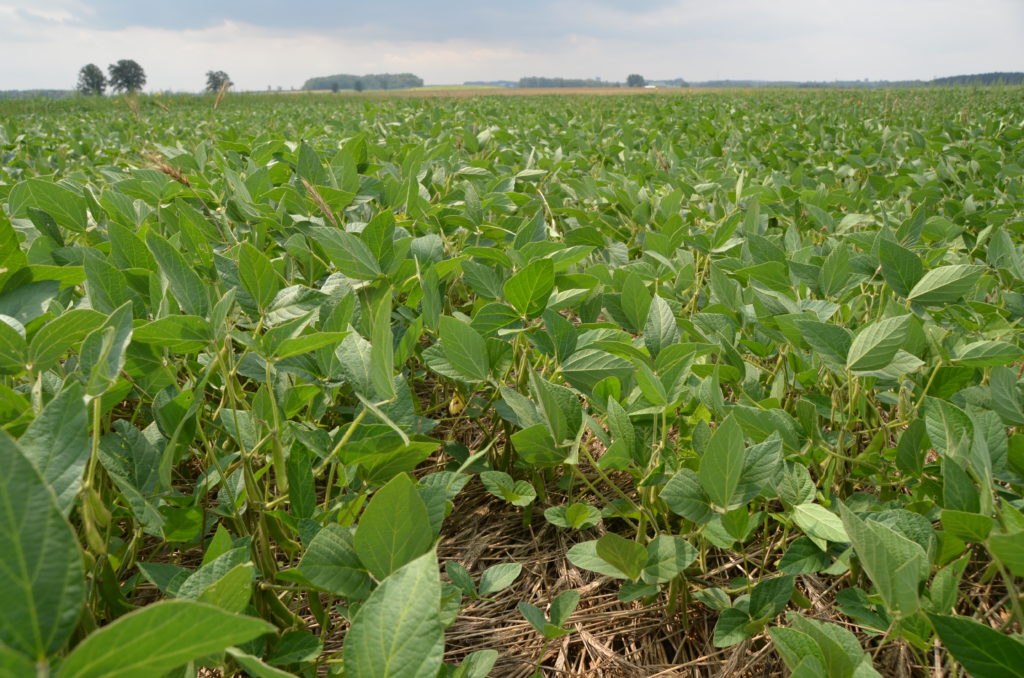This was the last meeting of the Exeter, Mount Forest Breakfast meeting for this spring. Thanks to all those who attended and a special thanks to those who participated in the discussion. We will email a survey to the group at a later date to explore ideas of how the meetings should be conducted next year (sit-down, virtual, hybrid, etc.).
Weather: There have been a number of cold nights with a few reports of frost damage especially on muck soils. Reports of frost damage have come from Norfolk, Huron, Perth, Wellington, Bruce, and Grey counties. A few fields will need to be replanted. Rainfall during the past week continues to be sporadic, with isolated thunderstorms resulting in tremendous variability in rainfall. Goderich received about 4/10” of rain, St Mary’s 1/2”, Thorndale 7/10”, Blenheim 2”, Harrow 3-1/2”, and Kingsville 4”. Bruce and Grey continue to remain dry with areas north of Highway 86 getting little rainfall and in many cases only 1/10” of rain.
Canola
Because of the drier conditions in northern counties, spring canola fields are stressed. Swede midge is now present in some areas. Winter canola is progressing rapidly. There is an article posted on FieldCropNews.com on pre-harvest herbicide use in canola.
Corn
The corn crop overall is in excellent condition with tremendous growth over the last few weeks. Since water demand is relatively small early in the growing season, much of the corn crop has not suffered significant moisture stress to date. Even though showers have been light, they have been enough to sustain the crop. There was a report of Sulphur deficiency in tissue samples. Nitrate samples taken in fields that had a portion of the N fertilizer already applied are showing little loss of N.
Soybeans
Early planted soybeans have started to flower while mid-May planted soybeans are not quite there. April planted beans are at the 6th trifoliate leaf stage. Soybean flowering is initiated by shortening day length and heat, plus a strong genetic component. Varieties that are relatively short (low Relative Maturity Group) for a given area have started to flower but longer season beans for a given area have not yet begun. The cool nights over the last few days (below 10 degrees C) have slowed growth and delayed the initiation of flowering. Because most soybeans were planted in good time, many fields are now closing the rows. There is more vegetative growth than we often see for this time of year, but because of the photoperiod effect this does not mean that soybeans are ahead of normal in terms of growth staging. Excellent vegetative growth before flowering begins is ideal, and will set the plant up for a high number of nodes per plant. If 5 or 6 trifoliates can be achieved before flowering starts, the crop is off to an excellent start for maximum yield potential.
Low numbers of soybean aphids are present in a number of locations around the area. So far beneficial insects are helping to control numbers, but aphid populations will need to be monitored for the rest of the growing season. High aphid numbers and dry soil conditions are extremely detrimental to soybean yields. Although there were a number of pests causing stand issues this spring including seedcorn maggot, wireworm, and even slugs, most replanted fields have now emerged. Surfactant burn from a combination of different products in the tank at the same time are common on soybeans. Plants will outgrow these issues quickly.
There is an initiative to collect spider mites, especially if there is concern over spray efficacy. Please contact Tracey Baute if you have populations that can be added to this collection. Participation in the corn rootworm survey is also encouraged.
Yellowing in soybeans can be caused by a number of stresses, including nutrient deficiencies such as potassium and manganese. If fields are showing potassium deficiencies, take the time to look carefully at the roots; soybean cyst nematode could be the actual cause for the roots to be damaged, not a true lack of soil K. Very dry conditions can also lead to K deficiency. A soil test is the only way to determine if additional potash fertilizer is warranted.
Dry Beans
A few replants of dry beans have been necessary, but the overall crop is in good condition. Rains just at the wrong time have caused herbicide injury, and cold temperatures may have exacerbated these symptoms. Root rots, especially fusarium and rhizoctonia, were reported in both edible beans and soybeans. In Ontario about 80% of the root rot “load” is from fusarium, while about 20% is from rhizoctonia on edible beans. Although infection of fusarium occurs early in the season, severe symptoms may not be noticeable until July. Dry conditions seem to favour more fusarium, while wetter conditions encourage rhizoctonia. Trials have shown that seed treatments on edibles can improve plant stands by up to 50 percent, but under extreme disease pressure plant stands can still be severely impacted.
Cereals
Winter barley harvest will likely start this week in southern Ontario. Winter wheat is also progressing rapidly, and harvest could start as early as next week in the extreme southwest of the province. There is lodging of some fields, especially intensively managed crops. This is somewhat surprising, since much of the wheat was considered relatively short this year. Often high temperatures during the later stages of stem elongation will create weaker stems. Strip rust is present in a few areas, but since winter cereals are getting close to harvest, the disease is more of a concern in spring cereals at this point. A few fields have been sprayed for cereal leaf beetle where thresholds have been met. Huge differences in the amount of powdery mildew based on the variety and management continue to be reported.
